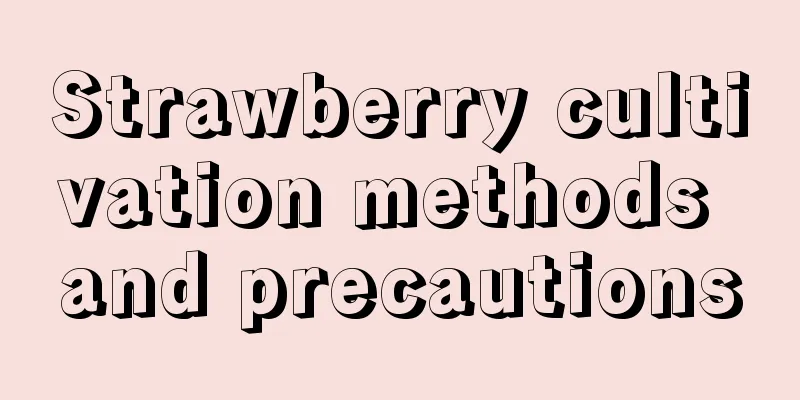List of homemade water-soluble fertilizers

|
Water-soluble fertilizers have been widely welcomed due to their high efficiency and environmental protection. Compared with traditional chemical fertilizers, water-soluble fertilizers can be absorbed more directly by plant roots, improving nutrient utilization while reducing pollution to the environment. In order to save costs, many people make their own water-soluble fertilizers. So what are their formulas? Let’s take a look together below. List of homemade water-soluble fertilizers 1. High potassium water-soluble fertilizer Formula: 4 catties of urea + 30 catties of potassium nitrate + 6 catties of potassium dihydrogen phosphate. After formulation, the contents of nitrogen, phosphorus and potassium are 14.4%, 7.8% and 39.6% respectively. 2. Water-soluble phosphate fertilizer Mix bean stalk ash and clean water in a ratio of 1:1000, put the bean stalk ash into a bag and soak it in water. The resulting fertilizer liquid can be used for spraying. 3. Amino acid water-soluble fertilizer The main components of amino acid water-soluble fertilizer are nitrogen, phosphorus, potassium, calcium, magnesium, trace elements, amino acids, etc. There are different formulas according to the needs of different crops. Common ones include: 25-40 parts of amino acids, 44-65 parts of compound bacterial fermentation broth, 6.5-8.5 parts of chelated trace elements, and 6.8-7.5 parts of boric acid. 4. Bone meal and eggshell water-soluble fertilizer Grind the cleaned and dried eggshells into powder, soak the bone meal in water overnight and add vinegar to speed up the dissolution. Then, mix the eggshell powder with the dissolved bone meal solution, add water to mix well, let it stand for 24 hours and stir from time to time to promote the full dissolution of minerals such as calcium and phosphorus. Dilute the prepared liquid with clean water in a ratio of 1:10 and use it. It is suitable for all kinds of plants that like calcium and phosphorus. Precautions for making your own water-soluble fertilizer 1. Raw material selection Select high-quality raw materials to ensure the purity and effectiveness of fertilizers . 2. Formula ratio Reasonably adjust the formula ratio according to the growth needs and nutrient requirements of crops. 3. Mix well During the preparation process, ensure that all raw materials are fully mixed evenly to avoid uneven nutrient distribution. 4. Safe use All homemade water-soluble fertilizers should be properly diluted before use to avoid excessive concentration that may burn plant roots. Overall, making your own water-soluble fertilizer can be a cost-effective fertilizer option. However, before using homemade water-soluble fertilizers, it is recommended to evaluate the specific needs of the plants and soil conditions to avoid adverse reactions.
|
<<: The best way to grow chives on the balcony
>>: How to grow loofah to achieve high yield?
Recommend
High-yield potato planting method
Open-field cultivation is the most common method ...
High-yield planting technology of cabbage
Cabbage is a very common vegetable. Many people g...
9 out of 10 pots of flowers rotted, it turns out it was because of this taboo!
Schlumbergera First, let’s talk about Christmas c...
How to water hibiscus
Watering frequency During the growth period of hi...
Where is the suitable place for planting Dendrobium candidum and what is the suitable growth environment
Dendrobium officinale planting area As more and m...
When and how to change the soil of arrowroot
Time to change the soil of arrowroot The most app...
What is the reason for the root rot of the fortune tree?
1. Reasons 1. Excessive water: When raising money...
How to germinate and plant mango seeds?
Mango is a famous tropical fruit and is known as ...
Cultivation methods and precautions of Tiger Jasmine
1. Soil selection Tiger jasmine is a difficult fl...
Can pregnant women eat mangosteen? What are the benefits of eating mangosteen?
1. Can pregnant women eat it? Pregnant women are ...
What is the best month to plant radish?
When to plant radish Water radish can be sown fro...
Types of pumpkins, pictures of pumpkins
1. Types of Pumpkin Honey Pumpkin: It is a hybrid...
How to grow a magic plant so that it will bloom to its full potential?
The succulent plant is upright and tall, with lus...
How to cut the money tree when there are too many leaves? Should the bad leaves and old leaves be cut off?
1. How to cut The plant grows very fast, and the ...
Why do we need to turn over and dry the soil before planting vegetables?
Whether it is vegetable planting, fruit tree plan...









